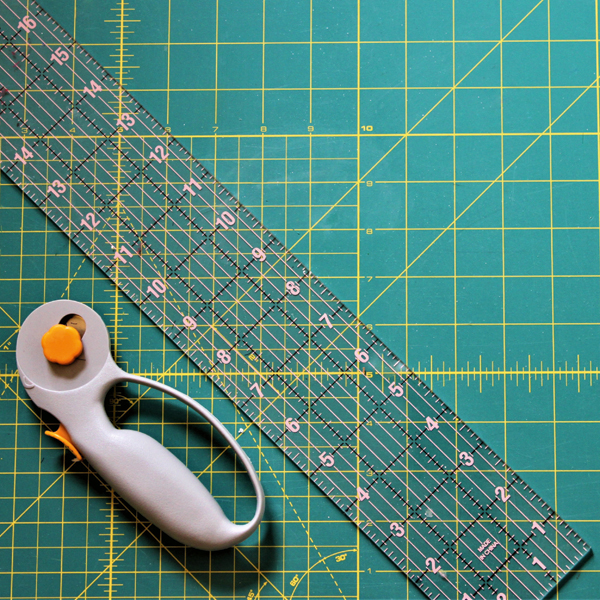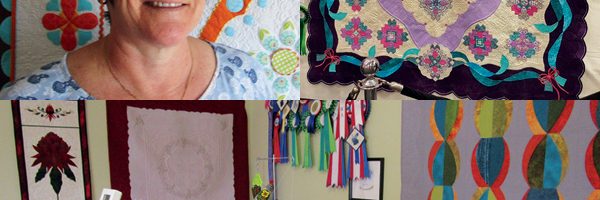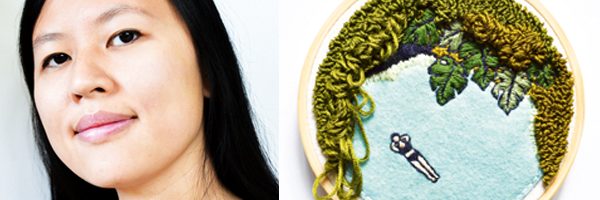
Know Your Product: Cutting Edge Cutting Mats
Cutting mats have two main jobs: protecting your table surface and increasing your cutter’s lifespan. They are also used to measure and accurately cut fabrics. A closer look at cutting mats reveals a number of important things.
When I began quilting back in the early ‘80s, rotary cutters, mats and rulers were not around. Good old-fashioned scissors were our only option. It was around the mid-‘80s when the quick rotary cutting method came onto the Australian quilting scene, and there were some patchwork teachers who heavily promoted them. At the forefront was Lorraine Moran, who taught workshops all over Australia, and Mary Ellen Hopkins in America.
The first cutting mats and rotary cutters available in Australia were the Olfa brand, then in the late ‘80s the Salem cutting mat and rulers were imported from the USA and distributed in Australia. Since then, many other brands are imported to and distributed in Australia.
These days, numerous quilters own a cutter, mat and ruler combination. When you are sewing by machine it is the easiest, quickest, most accurate way to cut your fabric. The most obvious considerations for your cutting mat purchase are the measurements/gridlines and what the mat is made of, as well as other factors.
TIP – If you are considering adding rotary cutting methods to your skills, you will need to be shown how to accurately line up and cut your fabric strips or shapes. There are tips and techniques that ensure success.
The gridlines help you determine precise measurements, and the angles are for cutting more complicated shapes such as triangles and diamonds. It is important you choose a mat with gridlines that are suitable to your needs, the most obvious being imperial verses metric. Some have both.
In general, quilters prefer a “self-healing” cutting mat. It is 3mm thick and made from three layers to ensure it protects your blades and your work surfaces. Some are 5mm thick with five layers. The thicker the mat, the longer it will last. The centre layer is hard plastic to ensure blades don’t cut right through. Self-healing mats don’t technically heal; the cuts remain but close up as the surface layer is softer. These are likely to be more expensive than hard plastic.
Mats made from hard PVC are also an option. They are generally larger and more appropriate for sewers who make clothes and/or home decor items, although some quilters may prefer their benefits. They are said to be less harsh on your blades, extending their cutting life. Over time, these mats are more noticeably affected by the cutting blades.
Hard PVC vs self-healing
When you use a rotary blade on a hard plastic cutting mat, the cutter will leave a small groove. Over time, these grooves add up and can affect your cutting accuracy and catch your fabric. Hard plastic mats are said to be less harsh on your cutting blade, extending its cutting life.
Large vs small
Mats up to 24in x 36in are a good size for tabletops in your sewing space and are manageable to store, but not so easy to transport. A mat that is 12in x 18in or 18in x 24in is more portable and requires less flat space in transit.
Cut and press mats
Generally these are not self-healing. They are great for small, lap-size sewing projects, but be careful not to iron on the cutting mat side.
Folding
A relatively new feature is the folding mat. A curved seam allows this mat to completely fold in half and then pop back into place without a dead zone, meaning you can cut anywhere on the mat and your rotary cutter won’t catch in the fold.
Rotating
These make squaring off quilting blocks or cutting out appliqué quicker and more convenient. Ensure they feature a self-healing mat with an easy-to-read measuring grid, plus bias lines to make accurate shape cutting hassle-free.
Double-sided
A double-sided mat offers double the lifespan! Depending on the colour of the sides, it offers choices that suit the colours of your fabrics and rulers better.
Translucent
Translucent and transparent mats are gridded on one side only, and are perfect for use on light boxes or for see-through applications.
Other things to consider when purchasing a mat
- Is the mat non-glare with an easy-to-read surface? Can it be used in all types of lighting?
- Is it made of eco-friendly material? This may be of importance to you.
- Is it made of a type of plastic that you are allergic to? Some types of plastic bring on an allergic reaction — you don’t want to discover this when you get home!
Caring for a self-healing mat
Sometimes loose threads will get caught in the grooves. You can use a light-weight scrubber, such as one used in the kitchen, to give the surface a gentle scrub to remove the lint and threads.
It is advised by manufacturers that self-healing mats be moisturised. This is done by soaking the mat in a solution of a quarter-cup white vinegar per four litres cool water and letting it soak for 15 to 20 minutes. Ensure the mat is lying flat. Do not use warm or hot water as it can warp your mat. Now add a bit of mild dish soap and take another soft brush, gently scrubbing the surface of the mat.
You can dry the mat with a cotton towel or let it air dry flat. Make sure it’s flat — you don’t want it to warp as it dries.
Store your mats flat
Unless it was designed to fold or roll, store your cutting mat flat, hang it on a wall, or leave it in an environment that does not expose it to extreme temperatures. And to prolong the life of your mat, you should never iron on it.
Keeping your mat flat, clean, moist and away from excess heat will preserve it for years to come.
Dull blades and your cutting mat
A good-quality cutting mat extends the life of your rotary blades. However, when the blade does dull, and that is more often that you would hope, it is important to replace it. You can damage the surface of your mat when you use dull blades as you use more pressure when trying to cut through, hence a deeper incision. It is advisable to keep your blades sharp and only use as much pressure as it takes to cut through the fabric without gouging the mat.
Where to buy cutting mats
All quilting, sewing and craft shops are likely to sell cutting mats. Check with your local store and/or those businesses that advertise in Quilters Companion. A few of our advertisers are distributors of well-known brands and shop owners can purchase from them.
TrueCut
The TrueCut self-healing cutting mats feature an enhanced self-healing surface that consists of five PVC layers, special grid measurements and numbering — including angle reference lines of 45, 60 and 90 degrees, fabric grain lines and bias lines for cutting bias binding. They are also double-sided. The mats come in three sizes: 12in x18in (30cm x 45cm), 18in x 24in (45cm x 60cm), and 24in x 36in (60cm x 91cm) and they can be rolled.
Distributor: Know How Sewing Essentials, email: mail@knowhowsewing.com.au
Fiskars
Fiskars has a large range of options when it comes to cutting mats including square, rectangle and rotating mats. A new addition to the range features easy-to-use block sizes printed on the surface for quick identification when cutting squares. The measuring grids are in imperial and metric and they are available in three sizes: 12in x18in (30cm x 45cm), 18in x 24in (45cm x 60cm), and 24in x 36in (60cm x 91cm). Fiskars also offers a rotating cutting mat.
Distributor: Fiskars Australia Pty Ltd, Ph: (03) 8645 2400
Clover
Clover’s triple-layer self-healing cutting mats have imperial measurements and three diagonals: 30, 45 and 60 degrees. They come in three sizes: 12in x18in (30cm x 45cm), 18in x 24in (45cm x 60cm), and 24in x 36in (60cm x 91cm).
Distributor: QH Textiles, Ph: (02) 9417 0867




